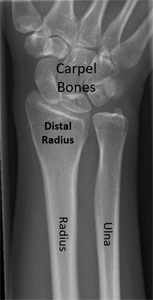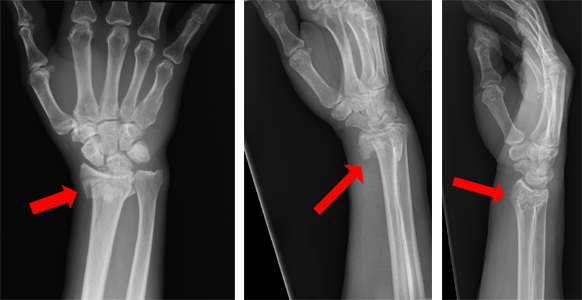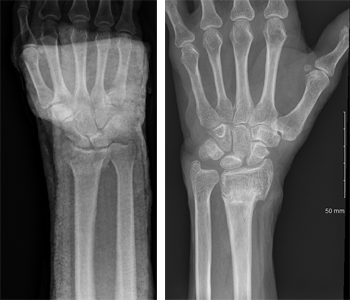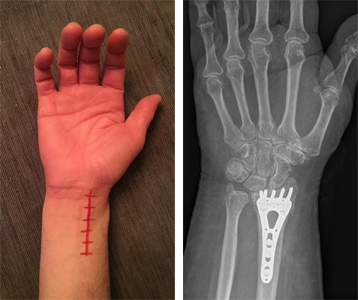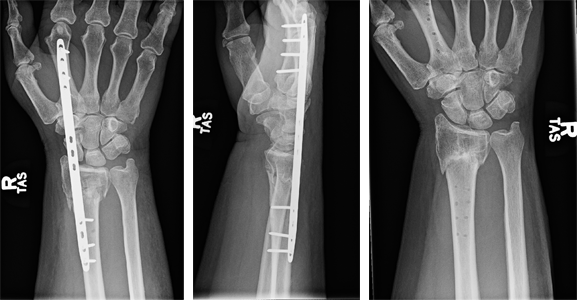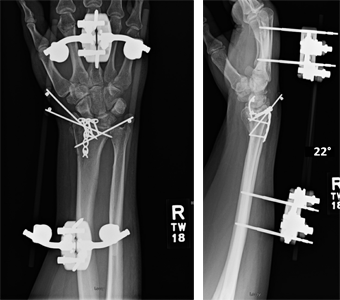Physical Therapy Videos - Forearm
What Is It?
The distal radius (wrist) is one of the most common bones to break. The distal (lower end) of your forearm makes up part of the wrist. There are several smaller bones that make up the other parts of the wrist but these break less often. Muscles in your upper arm and forearm help you move your elbow, wrist, and hand. There are two important arteries and nerves near your wrist that give feeling to your fingers and hand.
How It Happens
Broken wrists are very common, especially in kids under 16 and older women with weak bones. Young people often get hurt from accidents like falling off a skateboard. Older people usually break their wrist from a fall while standing. Other injuries to the arm can also break your wrist.
First Steps
A broken wrist hurts a lot and makes it hard to use your hand. At the emergency room or doctor's office, they will take x-rays to check for breaks. If the bone is not straight, a doctor will move it back into place. Then, you will get a cast or splint to keep your wrist still while it heals. You may need to see a special doctor called an orthopedic surgeon to talk about more treatments. If the bone poked through your skin or your hand feels numb, you may need to stay in the hospital for more care.
Treatment
Your treatment depends on how bad your break is. Some breaks can be treated with just a cast or splint while the bone heals. You won't be able to lift or push things until it heals, which takes about 6 to 12 weeks. You may also need to get x-rays often to make sure your bones are healing well. If your wrist is broken in many places, or the bone poked through your skin, you may need surgery. The doctor will make a cut on your skin near your wrist and use a plate, screws, or pins to hold the bones in place. After surgery, you may get a cast or splint.
Recovery
After surgery, you will need to be careful with your wrist and arm. You can move your fingers, but you should not lift, push, or pull anything. When your cast or splint is taken off, you may need therapy to help you move your fingers, hand, and wrist. Your doctor will tell you what activities you can and cannot do after surgery.
Long Term
After a broken wrist, your wrist might be stiffer or weaker than before. You may get arthritis, which can cause stiffness and pain. Your wrist may also look or feel different. Some broken wrists don't heal well and need more surgery. If you had plates and screws put in, they might be removed later. Most people can go back to their normal activities after breaking their wrist, but it might feel or work a little differently than before.
Physical Therapy Videos - Forearm
More Information
---
David M. Keller, DO; Jaclyn Jankowski, DO; and Frank A. Liporace, MD
Edited by the OTA Patient Education Committee and Steven Papp, MD (section lead)
X rays and images from the personal collections of Dr. Keller, Dr. Jankowski, Dr. Liporace and Christopher Domes, MD


